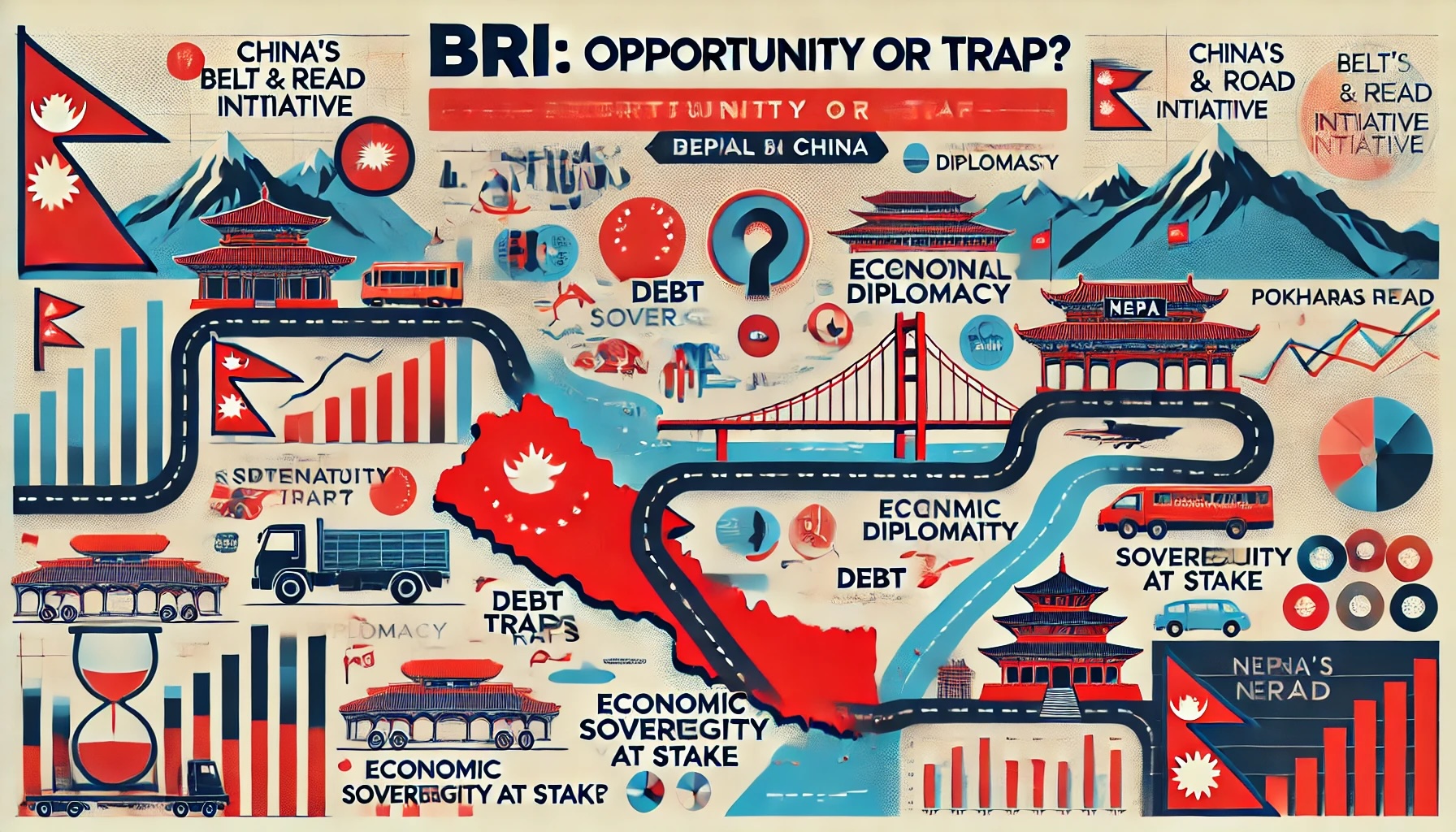Brewing Discontent in Kathmandu: China’s Strategic Hand in Nepal’s Political Unrest?

In the heart of Kathmandu, a wave of protests has once again stirred the dust of Nepal’s political past. With chants for the return of King Gyanendra and demands to re-establish Nepal as a Monarchy, the rallies have drawn thousands of frustrated citizens. In an unusually sharp escalation, some rallies have turned confrontational, with demonstrators clashing with security forces and accusing the political elite of selling out Nepal’s sovereignty. However,while the headlines focus on Nepal’s internal strife and dissatisfaction with democratic governance, a subtler, more strategic force may be at play, one that is tracing its roots back to Beijing.
Despite signing a Memorandum of Understanding with China under the Belt and Road Initiative (BRI) in 2017, Nepal has seen virtually no progress on the ground. In a telling display of overreach, Chinese diplomats have routinely attempted to rebrand unrelated infrastructure initiatives as BRI projects, forcing Nepal’s officials to repeatedly clarify the country’s actual standing in the framework. This deliberate conflation by Chinese representatives has not just been a diplomatic faux pas but has become a part of Beijing’slarger strategic playbook.
Frustrated by Kathmandu’s growing reluctance to accept Chinese loans, especially after several feasibility studies exposed the economic risks of Beijing’s funding model, the Chinese Communist Party (CCP) appears increasingly uneasy with Nepal’s sovereign choices. These studies have highlighted how high-interest loans, short repayment terms, and excessive collateral demands, hallmarks of Chinese financing, threaten to drive Nepal into a debt trap. The CCP's refusal to offer grants instead of loans has further stalled projects, suggesting that China’s economic overtures are focused more towards strategic gains than genuine development partnerships.
The Pokhara International Airport is a case in point. Funded by a Chinese loan of over $215 million, the project has become a symbol of China’s problematic investments: high in cost, low in returns, and laden with safety concerns. It also exemplifies how infrastructure diplomacy can morph into infrastructure dependency.
It is against this backdrop of economic anxiety and geopolitical tug-of-war that the pro-monarchy protests must be evaluated. Many of the groups organizing the current demonstrations lack the grassroots depth to sustain such mobilizations without external backing. Their sudden resurgence and coordinated messaging, paired with narratives about “nationalist revival” and “foreign threats,” are alarmingly consistent with the tactics used in influence operations elsewhere in the region.
As Nepal continues to push back, by demanding grants over loans, maintaining a cautious stance on BRI projects, and openly voicing economic and political concerns, Beijing may be turning to more indirect methods to sway Kathmandu’s hand. The sudden resurgence of mass pro-monarchy protests, many led by fringe groups with ambiguous funding sources and organizational capacity, is raising questions about external influences fanning domestic unrest.
China has historically used soft power, economic inducements, and when required, subtle coercion to extend its influence in neighbouring countries. In the context of Nepal, where the institutional foundations of federalism remain fragile and public disillusionment with democratic governance is palpable, the conditions are ripe for the deployment of information manipulation, strategic narrative framing, and clandestine support to disruptive domestic actors. While the reinstatement of the monarchy may not align directly with Beijing’s core objectives, any erosion of Nepal’s democratic institutions and the subsequent delegitimizationof its republican leadership could nonetheless advance the CCP’s broader strategic calculus in the region.
Add to this the nearly $1.84 billion trade deficit Nepal holds with China, a figure likely to balloon further, and it becomes evident why Kathmandu has every reason to remain wary. Increasing economic imbalance, coupled with Beijing's pressure to accept dubious financial terms, may push Nepal toward losing control over critical national assets.
For Nepal, the path forward must be one of careful calibration. The state must prioritize partnerships that respect its autonomy, address its economic vulnerabilities without strings attached, and recognize its geopolitical sensitivities. Aligning with likeminded nations and coalitions that advocate for a democratic and equitable South Asia could be Nepal’s best bet to escape the tightening grip of Chinese influence.
Ultimately, if Kathmandu gives in to Beijing’s pressure, either economic or political, it will end up risking much more than monetary loss. It will risk compromising the very democratic foundation that it has strived to build since the monarchy’s fall. And that is a price too steep for any sovereign nation to pay.

![From Kathmandu to the World: How Excel Students Are Winning Big [Admission Open]](https://nepalaaja.com/img/70194/medium/excel-college-info-eng-nep-2342.jpg)
